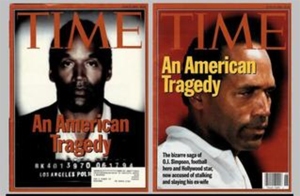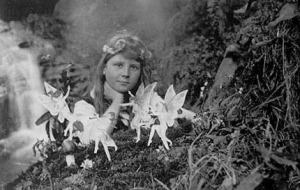Objective: to gain an understanding of the importance of authenticity in photography and what the ramifications are when it is challenged.
The first image I have chosen for this task is this image of O.J Simpson which featured on the cover of Time Magazine in ’94. The arrest photo taken by L.A.P.D showed up on 2 different magazines at the same time, the Time Magazine cover seemingly different to the Newsweek cover. The magazine was criticized and accused of racism for the cover of the altered image. It was said that the magazine “demonized” a black man being charged for the double murder of a white man & woman.
Illustrator Matt Mahurin was the one to alter the image, saying later that he “wanted to make it more artful, more compelling.” The magazine did something it had never done before and has never done since. They pulled the issue and re-issued a second cover. Only mail subscribers ever saw the first cover.
When an image is questioned like this the photographer & the magazine has their credibility questioned. The two issues present here is a question of photographic ethics and the other is a question of racial insensitivity by TIME in deciding that blacker means guiltier. They changed the photo from what it was (a document) into what they wanted it to be. The magazine was making an editorial statement, not reporting the news. By doing this, they damaged their credibility and the credibility of the journalists.
Images and information collected from http://blogcritics.org/ojs-last-run-a-tale-of/ & https://nppa.org/page/5127
________________________________________________________________________________________
The second image I have chosen is an image created by young cousins Elise Wright (16) and Frances Griffiths (10) in 1917 who claimed to have seen fairies in their garden. The series of images were highly publicised and caused quite a sensation. Many believed that the images were in fact of real fairies. The girls maintained that the images were never altered. The fairies were actually cardboard cut outs arranged for the photographs.
In 1917 long, long, before the days of digital an image like this would have been a big deal. This era saw an opinion of a photograph being factual. Today with digital manipulation I think most people accept that an image would have been altered in some way.
If the artist was intentionally trying to deceive the viewer or the public for some kind of personal gain then yes I think ethically it is wrong. Here though I think it is just a couple of kids having a bit of fun with their imaginations.
Image and information collected from http://www.astropix.com/HTML/J_DIGIT/ETHICS.HTM & http://www.fourandsix.com/photo-tampering-history/


